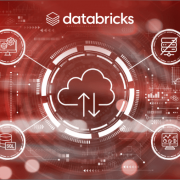Data collection for retail shops has grown from the manual inventory of receipts to sophisticated POS systems nowadays. However, retailers everywhere are facing new business disruptions on the account of the global COVID-19 pandemic. They are racing to adopt new strategies to be successful moving forward. What store locations should open first? What are the shopping patterns and can we improve them for social distancing? Where is my supply coming from and what should be restocked? As such, real-time data and analytics will have a key role to play when operations resume.
Decisions made in a silo will unintentionally affect other aspects of the business. Making sure you not only have the data and insights but really understanding what is happening during the full lifecycle of your business is imperative. Knowing your customers so you can provide recommendations, partnering with suppliers to improve product availability, assisting ground staff to optimize store utilization and services, benchmarking competition, and pricing to stay ahead will all need timely data and powerful insights delivered in near-real-time.
Making Data-driven Recommendations
- First, establish robust ground communicationCommunication will be vital, with both your ground staff and customers. Create a centralized ‘response team’ to maintain real-time contact with stores to understand and solve challenges being faced on the ground. Extend relevant information to customers, to help them make more informed choices. In addition, share updates on specific efforts taken to keep customers and workers safe, for example, special store hours for seniors, items tried or returned to be held for 24 hours and more.
- Leverage digital transformation in retail – Focus on technologies that can help in these times, such as:
- Store navigation, live digital interactions, geo-fencing, and wayfinding solutions – ensure customers can find the products they want as quickly as possible.
- Scan & Go using a mobile app – allows customers to reduce human contact and avoid standing in line.
- Click and collect – order products online (mostly via a mobile app), and collect them by the entrance of the stores, from special “parcel locker” nearby, or other supporting locations.
A good example here is from one of our key customers. they recently released a series of live stream sessions and short videos to introduce its new range of customizable handbags. These broadcasts were bolstered by other digital experiences, including a mobile lifestyle quiz leading to personalized handbag recommendations from the brand’s namesake designer.
- Push the pedal on omni-channel strategyAn omni-channel strategy is a must to ensure movement in the stock levels. Managing inventory centrally and servicing ecommerce orders through in-store inventory will be essential. Incentivize in-store customers to adopt technology to experience and buy products online or remote shop at the store. Shift workforce to support order picking for ship from store, click & collect, home, and curbside deliveries.For example, one of our customers, PetSmart’s launched a hugely successful curbside pick-up program where customers can order online, drive-up, check-in with mobile, and pick up the merchandise safely. PetSmart revamped its mobile platform and re-assigned its store associates to support curbside deliveries and was able to deliver essential products and services, even in high-risk areas.
- Enable access to analytics that helpsDeploy artificial intelligence (AI) or machine learning (ML) based analytics using hot data sets to aggregate and provide real-time intelligence on changing consumer behavior and happenings in the stores around social distancing, traffic management, and occupancy rules. Provide real-time intelligence on product demand, product availability, competitor, and price benchmarking quickly to make swift decisions. Implement ‘triggered alerts’ as a way to notify customers in real-time about the products they most care about. Automate price drop, low inventory, and back in stock messages to those who interacted with specific items. This can become a major differentiator and greatly enhance customer experience.
Recognize Their Opportunity to Make Data-Driven Decisions
This time can be intimidating, but using data brings clarity and instills confidence to make appropriate decisions. This is the perfect time for retail companies to use data to do what is best for the business and workforce. The role of data and analytics is rapidly changing from simply acting as a business-supporting function to a catalyst for digital transformation.
Hear Infocepts CEO Shashank Garg’s point of view as he engages in a dialogue with Evan Levy, a recognized thought leader in data and analytics. They discuss how businesses should invest in their D&A programs today to achieve a sustainable advantage for their business and mission. Watch now.
Recent Blogs

What Retail Media Can Learn from Instacart’s AI Strategy
June 24, 2025

Beyond Chatbots: How Agentic AI Is Automating High-Stakes Business Decisions
June 11, 2025

From Batch to Real-Time: The Future of Data Distribution Using Databricks Delta Sharing
June 4, 2025

Accelerating Databricks Serverless Adoption with Agentic AI & Proven Practices
May 29, 2025


